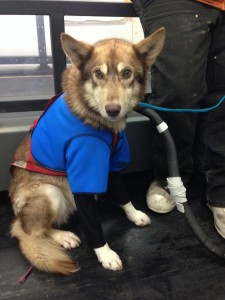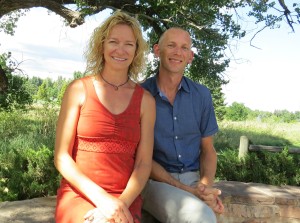For the past three years, CSU professors Karyn Hamilton and Ben Miller have spent a significant amount of time in Alaska studying competitive sled dogs known as Alaskan Huskies, in search of clues about how to slow the aging process.
The dogs, which race in events such as the Iditarod, are extraordinary in their ability to sustain a large amount of work over a prolonged period of time. The research team has largely worked at the kennels of legendary musher Martin Buser and current stars Aliy Zirkle and Allen Moore. Miller and Hamilton say that one trip to the kennels is enough to convince you that these dogs are among the happiest in the world, given the love and care they receive and the dogs’ enthusiasm when doing what they love to do — run!

The larger purpose of the research has been two-fold: to train better military working dogs and to apply lessons learned from sled dogs to the modern soldier.
According to Miller and Hamilton, the remarkable physiology of sled dogs makes them a valuable model for research aimed at human health. First, they are extremely aerobic animals capable of sustaining exercise for prolonged periods. The average person has a peak oxygen uptake, the measure of aerobic capacity, of around 30 to 45 ml/kg/min. The trained Alaskan Husky is somewhere around 240 ml/kg/min.
Second, the sled dogs seem to gain their fitness at a remarkably quick rate. It has been shown that some compensatory changes in response to exercise happen within just a couple of exercise bouts. For the human, this would mean being able to run a marathon quite well after just a few training sessions.
Lastly, the sled dogs seem to be able to acclimate easily to cold temperatures and high altitude.
Hamilton and Miller run the Translational Research in Aging and Chronic Disease Laboratory within the Department Health and Exercise Science at CSU, which has built a national reputation for research related to the slowing of diseases associated with the aging process. This research, supported by the National Institutes of Health, has allowed the TRACD team to make important insights into fundamental cellular processes that lead to aging and how to slow that process.

More recently, Hamilton and Miller have been able to apply some of the observations from their studies of aging to the sled dogs. Mitochondria are the cellular organelles that allow for aerobic energy production, and mitochondrial dysfunction is widely thought to contribute to the aging process. Using techniques to measure both how fast new mitochondria are being made and how well mitochondria function, the researchers are hoping to find out more about the amazing ability of the canines.
The lessons learned from the dogs contribute to the growing understanding of potential ways to slow aging and prolong human health.